Originally posted by the lioness,:

A Young female royal attendant from entrance to a bath of the Tachara Palace (Persepolis), carries a cruse of oil and a towel
The truth is revealed when you see the beardless ones, the females.

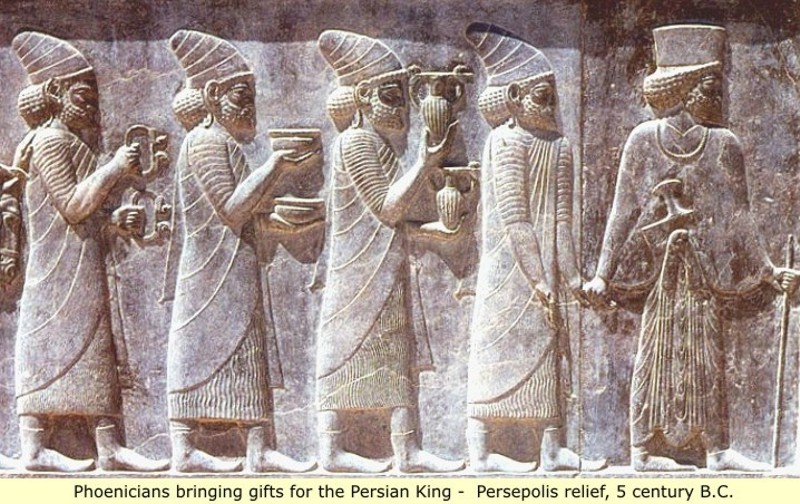








quote:.
Originally posted by the lioness,:
that's right Mike, curly hair can cross the color line
quote:
Originally posted by Mike111:
quote:.
Originally posted by the lioness,:
that's right Mike, curly hair can cross the color line
Stupid bitch, you are trying to make the exception the rule. Curly hair is not common in pure Albinos, however, it is common in the "Roons". i.e. Quadroons, Octoroons, etc.



quote:.
Originally posted by the lioness,:

A Young female royal attendant from entrance to a bath of the Tachara Palace (Persepolis), carries a cruse of oil and a towel
The truth is revealed when you see the beardless ones, the females.
quote:.
Originally posted by the lioness,:

A Young female royal attendant from entrance to a bath of the Tachara Palace (Persepolis), carries a cruse of oil and a towel
The truth is revealed when you see the beardless ones, the females.

quote:Awesome,
Originally posted by the lioness,:

A Young female royal attendant from entrance to a bath of the Tachara Palace (Persepolis), carries a cruse of oil and a towel
The truth is revealed when you see the beardless ones, the females.
quote:Yes it is
Originally posted by Mike111:
quote:.
Originally posted by the lioness,:
[qb]
A Young female royal attendant from entrance to a bath of the Tachara Palace (Persepolis), carries a cruse of oil and a towel
The truth is revealed when you see the beardless ones, the females.
As I said, that's not a Persian female:

quote:Carthage was founded by Phoenicians
Originally posted by the questioner:
[QB] so basically none of you can prove that Carthage had coins
quote:The lower one is a boy and also when you see it in the full scene he and his three comrades are shorter than the adults
Originally posted by Narmerthoth:
Both of the above engravings appear to my 20/20 vision as male.
quote:i don't want no regurgitation
Originally posted by the lioness,:
quote:Carthage was founded by Phoenicians
Originally posted by the questioner:
[QB] so basically none of you can prove that Carthage had coins
The Phoenicians came from what is now Lebanon
They had coins called Tyrian shekels and these were used in Carthage
the coins bore the likeness of the Phoenician god Melqart or Baal, accepted as the Olympian Herakles by the Greeks and derided as Beelzebub by Jews in the time of the Seleucids, wearing the laurel reflecting his role in the Tyrian games and the ancient Olympic Games.
quote:round piece of metal with a image on it
Originally posted by DD'eDeN:
Define coin. Metal only?
quote:Why do you want the coins not to be Phoenician? That is the real question.
Originally posted by the questioner:
quote:i don't want no regurgitation
Originally posted by the lioness,:
quote:Carthage was founded by Phoenicians
Originally posted by the questioner:
[QB] so basically none of you can prove that Carthage had coins
The Phoenicians came from what is now Lebanon
They had coins called Tyrian shekels and these were used in Carthage
the coins bore the likeness of the Phoenician god Melqart or Baal, accepted as the Olympian Herakles by the Greeks and derided as Beelzebub by Jews in the time of the Seleucids, wearing the laurel reflecting his role in the Tyrian games and the ancient Olympic Games.
you must remember that the Phoenicians are not Greeks so coins would not be used by them
the gods and goddesses that are depicted on the coins of Phoenicia are Greek and roman gods not Phoenician
(Phoenicians did not wear "laurels")
the Greeks used to trade with Phoenicians and Alexander the great conquered Phoenicia
if you keep insisting that the coins are Phoenician then you will have to prove it
quote:
The coinage of Carthage was first minted from the 5th century BCE. Initially adopting the drachma, the Carthaginians later minted silver shekel coins. Designs were instantly recognisable, as intended, and included famous figures such as Hannibal or local flora and fauna like the palm tree and elephant.
Carthage, like its Phoenician founders and many other ancient Mediterranean trading cultures, was a relatively late entrant into the world of coins. Greece and its colonies had already been using them for several centuries. Barter and exchange were the tried and tested form of payment in the ancient world prior to coinage, and this system was particularly useful for nations like Carthage which traded in far-flung places where minted coins were less useful and their value not always recognised. Eventually, though, the convenience of transporting ingots of specific weights made from precious and semi-precious metals convinced the Carthaginians to adopt this method, and from there it was but a small step to minting even more manageable forms of payment in the shape of coins.
The first Carthaginian coins were not actually minted at the home city of Carthage but in Sicily sometime in the late 5th century BCE, not coincidentally, a place which had long produced its own coins. The beginning of a Carthaginian controlled mint was likely driven, as it had been earlier in wider Greece, by the necessity to pay mercenary troops. Soldiers in the field did not have much use for heavy metal ingots and nor could they conveniently carry about large quantities of goods such as grain or other foodstuffs. The military campaigns of Carthage in western Sicily from 409 and 405 BCE and the arrival of coinage were not, then, unrelated.
The first Carthaginian coins were made of either silver or bronze and copied the Greek tetradrachm (four-drachma) coin and its denominations famously produced by Athens.
Coins in the ancient world were an important means to convey political and cultural messages by presenting the heads of rulers and figures from local mythology. Carthage was no different, and their coins depicted such important figures as Dido (aka Elissa and distinguished by her soft Phrygian cap with long neck and earflaps) who was the legendary founder of Carthage, the god Melqart (typically wearing a lionskin headdress and/or carrying a club), the goddesses Tanit, Astarte, and more rarely Isis, and the great generals Hamilcar Barca and Hannibal. Other popular and instantly recognisable designs were a ship's prow, the palm tree, horse (either just the head or whole), lion, and war elephant
Carthaginian coins sometimes bore legends as well as pictures which included the city of issue, such as Sys (Panormus) and Qart-hadasht, or words indicating their immediate destination: mhnt (army), 'm mhnt (people of the army), mhsbm (paymasters), and b'rst ('in the territories', e.g. Sicily and Spain).
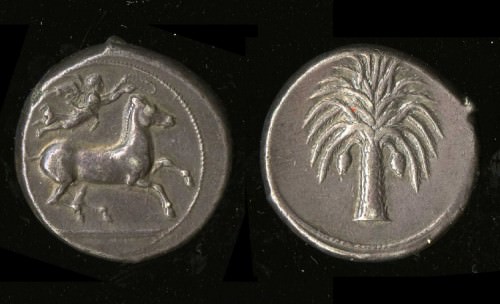
quote:^^^you cant even prove the coin you presented is even Carthaginian
Originally posted by the lioness,:
quote:Why do you want the coins not to be Phoenician? That is the real question.
Originally posted by the questioner:
quote:i don't want no regurgitation
Originally posted by the lioness,:
quote:Carthage was founded by Phoenicians
Originally posted by the questioner:
[QB] so basically none of you can prove that Carthage had coins
The Phoenicians came from what is now Lebanon
They had coins called Tyrian shekels and these were used in Carthage
the coins bore the likeness of the Phoenician god Melqart or Baal, accepted as the Olympian Herakles by the Greeks and derided as Beelzebub by Jews in the time of the Seleucids, wearing the laurel reflecting his role in the Tyrian games and the ancient Olympic Games.
you must remember that the Phoenicians are not Greeks so coins would not be used by them
the gods and goddesses that are depicted on the coins of Phoenicia are Greek and roman gods not Phoenician
(Phoenicians did not wear "laurels")
the Greeks used to trade with Phoenicians and Alexander the great conquered Phoenicia
if you keep insisting that the coins are Phoenician then you will have to prove it
there was trading going on so they would have to exchange currency, the imagery syncretic
We need context and background:
quote:
The coinage of Carthage was first minted from the 5th century BCE. Initially adopting the drachma, the Carthaginians later minted silver shekel coins. Designs were instantly recognisable, as intended, and included famous figures such as Hannibal or local flora and fauna like the palm tree and elephant.
Carthage, like its Phoenician founders and many other ancient Mediterranean trading cultures, was a relatively late entrant into the world of coins. Greece and its colonies had already been using them for several centuries. Barter and exchange were the tried and tested form of payment in the ancient world prior to coinage, and this system was particularly useful for nations like Carthage which traded in far-flung places where minted coins were less useful and their value not always recognised. Eventually, though, the convenience of transporting ingots of specific weights made from precious and semi-precious metals convinced the Carthaginians to adopt this method, and from there it was but a small step to minting even more manageable forms of payment in the shape of coins.
The first Carthaginian coins were not actually minted at the home city of Carthage but in Sicily sometime in the late 5th century BCE, not coincidentally, a place which had long produced its own coins. The beginning of a Carthaginian controlled mint was likely driven, as it had been earlier in wider Greece, by the necessity to pay mercenary troops. Soldiers in the field did not have much use for heavy metal ingots and nor could they conveniently carry about large quantities of goods such as grain or other foodstuffs. The military campaigns of Carthage in western Sicily from 409 and 405 BCE and the arrival of coinage were not, then, unrelated.
The first Carthaginian coins were made of either silver or bronze and copied the Greek tetradrachm (four-drachma) coin and its denominations famously produced by Athens.
Coins in the ancient world were an important means to convey political and cultural messages by presenting the heads of rulers and figures from local mythology. Carthage was no different, and their coins depicted such important figures as Dido (aka Elissa and distinguished by her soft Phrygian cap with long neck and earflaps) who was the legendary founder of Carthage, the god Melqart (typically wearing a lionskin headdress and/or carrying a club), the goddesses Tanit, Astarte, and more rarely Isis, and the great generals Hamilcar Barca and Hannibal. Other popular and instantly recognisable designs were a ship's prow, the palm tree, horse (either just the head or whole), lion, and war elephant
Carthaginian coins sometimes bore legends as well as pictures which included the city of issue, such as Sys (Panormus) and Qart-hadasht, or words indicating their immediate destination: mhnt (army), 'm mhnt (people of the army), mhsbm (paymasters), and b'rst ('in the territories', e.g. Sicily and Spain).

Here we have a Tunisian palm tee
Historian say that Carthage had coins. Phoenicians colonies in Africa like Carthage were founded on trade so it made sense for them to have coins for that purpose since their partner had coins.
You are doing what you typically do
You take something that is historical and suggest that it was not true
That is fine if you were to start with the standard background as I am doing and them to question it
But instead what you do is make a unique claim and then suggest that if other people can't disprove it it is therefore true.
So you put the burden of proof on them when it should be on you who are suggesting something unusual
But that is your responsibility
That is why people write scientific articles instead of asking a question so that everybody else does the work
![[Wink]](wink.gif)
quote:Are you claiming that the Phoenicians had no coins?
Originally posted by the questioner:
where is your ancient references?[/QB]
quote:there is no evidence Phoenicians used coins
Originally posted by the lioness,:
quote:Are you claiming that the Phoenicians had no coins?
Originally posted by the questioner:
where is your ancient references?![[Wink]](wink.gif)
Yes or no please, then we can proceed [/QB]
quote:
Originally posted by the questioner:
quote:there is no evidence Phoenicians used coins
Originally posted by the lioness,:
quote:Are you claiming that the Phoenicians had no coins?
Originally posted by the questioner:
where is your ancient references?![[Wink]](wink.gif)
Yes or no please, then we can proceed
the Phoenicians allegedly wrote on Greek coins just like they did on Egyptian coffins
but they did not make coins themselves [/QB]
quote:So you believe there is no evidence or record of the Romans shutting down a mint in Tyre?
wikipedia:
a modern Israeli half-shekel and were issued by Tyre, in that form, between 126 BC and 56 AD. Earlier Tyrian coins with the value of a tetradrachm, bearing various inscriptions and images, had been issued beginning in the latter half of the fifth century B.C.[2]
After the Roman Empire closed down the mint in Tyre,
quote:your talking about post Alexander the great era
Originally posted by the lioness,:
quote:
Originally posted by the questioner:
quote:there is no evidence Phoenicians used coins
Originally posted by the lioness,:
quote:Are you claiming that the Phoenicians had no coins?
Originally posted by the questioner:
where is your ancient references?![[Wink]](wink.gif)
Yes or no please, then we can proceed
the Phoenicians allegedly wrote on Greek coins just like they did on Egyptian coffins
but they did not make coins themselvesquote:So you believe there is no evidence or record of the Romans shutting down a mint in Tyre? [/QB]
wikipedia:
a modern Israeli half-shekel and were issued by Tyre, in that form, between 126 BC and 56 AD. Earlier Tyrian coins with the value of a tetradrachm, bearing various inscriptions and images, had been issued beginning in the latter half of the fifth century B.C.[2]
After the Roman Empire closed down the mint in Tyre,
quote:http://www.forumancientcoins.com/numiswiki/view.asp?key=carthage
Carthage
Historia Numorum
Carthago (Müller, ii, pp. 66 sqq.). It is noteworthy that this wealthy commercial state, with its population of some 700,000 inhabitants, made no use whatever of coined money until the great invasion of Sicily, B.C. 410, brought her armies for the second time into contact with the Greeks. Then and not till then does it appear that the necessity arose for striking coins, and it may be assumed that the payment of the troops employed in the devastation of the flourishing Hellenic settlements in that island was the immediate occasion of the coinage. That the use of coined money and the art of coining were borrowed by the Carthaginians from their Greek enemies is obvious from the adoption of the Sicilian type of the head of Persephone, and from the unmistakably Greek style of the earliest Carthaginian pieces.
Some of the types appear to be characteristically Carthaginian; e. g. the palm-tree (φοινιξ), which is evidently a canting type, and the horse’s head, which seems to allude to the foundation-legend mentioned by Virgil (Aen. i. 442 ff.). Otherwise, the Punic inscription is the only indication that these series of coins are not purely Greek, and there is every reason to think that they were struck in Sicily and not in Africa, and that Greek artists were employed to engrave the coin-dies. In several instances the names of Carthaginian towns in Sicily occur upon the coins, such as רש מלקרת, Resh Melqarth = Cephaloedium, המטוא Motya, ציץ = Panormus (?), ארך Eryx, כפרא Kfra (Kaphara, Village) = Solus. These have been already described under the cities whose names they bear (pp. 136, 139, 158, 161 f., and 170). There are, however, several other series bearing the inscriptions קרתחדשת, Qart Chadsat (= New city of Carthage); מחנת, Machanat (= the Camp); עם מחנת ,עם המחנת, or שעם מחנת, Am Machanat, Am hammachanat, or Shâm Machanat (People of the Camp); מחשבם, Mechasbim (the Quaestors), &c., which cannot be distinctly classed to any particular locality in Sicily. Such coins may therefore be appropriately described as Siculo-Punic, that is to say, as coins struck in Sicily for the payment of the Carthaginian armies. The following are the principal varieties (see Holm, Gesch. Sic., iii, pp. 643 ff.):—
Siculo-Punic Coins. c. B.C. 410-310.
GOLD. Phoenician Standard
quote:absolutely not because Persephone is a Greek goddess
Originally posted by the lioness,:
quote:http://www.forumancientcoins.com/numiswiki/view.asp?key=carthage
Carthage
Historia Numorum
Carthago (Müller, ii, pp. 66 sqq.). It is noteworthy that this wealthy commercial state, with its population of some 700,000 inhabitants, made no use whatever of coined money until the great invasion of Sicily, B.C. 410, brought her armies for the second time into contact with the Greeks. Then and not till then does it appear that the necessity arose for striking coins, and it may be assumed that the payment of the troops employed in the devastation of the flourishing Hellenic settlements in that island was the immediate occasion of the coinage. That the use of coined money and the art of coining were borrowed by the Carthaginians from their Greek enemies is obvious from the adoption of the Sicilian type of the head of Persephone, and from the unmistakably Greek style of the earliest Carthaginian pieces.
Some of the types appear to be characteristically Carthaginian; e. g. the palm-tree (φοινιξ), which is evidently a canting type, and the horse’s head, which seems to allude to the foundation-legend mentioned by Virgil (Aen. i. 442 ff.). Otherwise, the Punic inscription is the only indication that these series of coins are not purely Greek, and there is every reason to think that they were struck in Sicily and not in Africa, and that Greek artists were employed to engrave the coin-dies. In several instances the names of Carthaginian towns in Sicily occur upon the coins, such as רש מלקרת, Resh Melqarth = Cephaloedium, המטוא Motya, ציץ = Panormus (?), ארך Eryx, כפרא Kfra (Kaphara, Village) = Solus. These have been already described under the cities whose names they bear (pp. 136, 139, 158, 161 f., and 170). There are, however, several other series bearing the inscriptions קרתחדשת, Qart Chadsat (= New city of Carthage); מחנת, Machanat (= the Camp); עם מחנת ,עם המחנת, or שעם מחנת, Am Machanat, Am hammachanat, or Shâm Machanat (People of the Camp); מחשבם, Mechasbim (the Quaestors), &c., which cannot be distinctly classed to any particular locality in Sicily. Such coins may therefore be appropriately described as Siculo-Punic, that is to say, as coins struck in Sicily for the payment of the Carthaginian armies. The following are the principal varieties (see Holm, Gesch. Sic., iii, pp. 643 ff.):—
Siculo-Punic Coins. c. B.C. 410-310.
GOLD. Phoenician Standard
Do you agree with this?
quote:what ancient source supports that they borrowed coins from Sicily
Originally posted by the lioness,:
It says
That the use of coined money and the art of coining were borrowed by the Carthaginians from their Greek enemies is obvious from the adoption of the Sicilian type of the head of Persephone, and from the unmistakably Greek style of the earliest Carthaginian pieces.
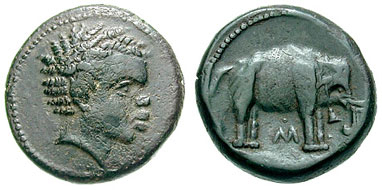

quote:It's obvious you have been wasting your time with the lioness.
Originally posted by the questioner:
quote:what ancient source supports that they borrowed coins from Sicily
Originally posted by the lioness,:
It says
That the use of coined money and the art of coining were borrowed by the Carthaginians from their Greek enemies is obvious from the adoption of the Sicilian type of the head of Persephone, and from the unmistakably Greek style of the earliest Carthaginian pieces.
this is conjecture
agathocles of Syracuse brought money with him to North Africa
![[Big Grin]](biggrin.gif)
quote:True, neither did they in color complexion.
Originally posted by the lioness,:
quote:Yes it is
Originally posted by Mike111:
quote:.
Originally posted by the lioness,:
[qb]
A Young female royal attendant from entrance to a bath of the Tachara Palace (Persepolis), carries a cruse of oil and a towel
The truth is revealed when you see the beardless ones, the females.
As I said, that's not a Persian female:

Look at the features, not that different
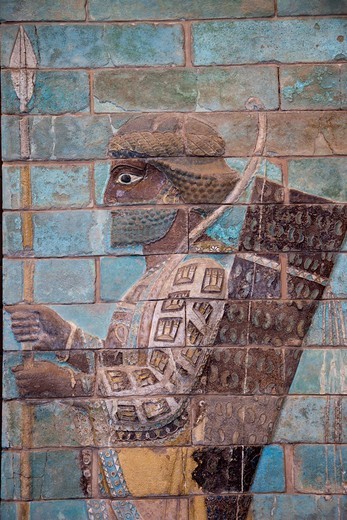
quote:Of course he hasn't. I am the only one who actually did research to address his question while you are now trolling posting off topic pictures of Persians
Originally posted by Ish Gebor:
quote:It's obvious you have been wasting your time with the lioness.
Originally posted by the questioner:
quote:what ancient source supports that they borrowed coins from Sicily
Originally posted by the lioness,:
It says
That the use of coined money and the art of coining were borrowed by the Carthaginians from their Greek enemies is obvious from the adoption of the Sicilian type of the head of Persephone, and from the unmistakably Greek style of the earliest Carthaginian pieces.
this is conjecture
agathocles of Syracuse brought money with him to North Africa![[Big Grin]](biggrin.gif)
quote:that is a Italian coin struck in the honor of a famous Punic (hannibal)
Originally posted by the lioness,:

Is this a Punic coin?
quote:that is a Greek coin with Phoenician writing on it
Originally posted by the lioness,:
http://www.polatkaya.net/PHOENICIAN%20CITY%20OF%20GADES%20Part%203.htm

Figure 7 From A. Di Natale: “Drachm, Phoenician Punic coin in silver from Gadir, III b.C. (3.3 g);
obverse: Head of Melkart-Herakles left, wearing lion's skin headdress; club on left shoulder;
reverse: tuna-fish left Phoenician script MP'L (PK: MP’M or MF’M) above and 'GDR below.”
_____________________
above and below the fish is Phoenician writing
need I say more?
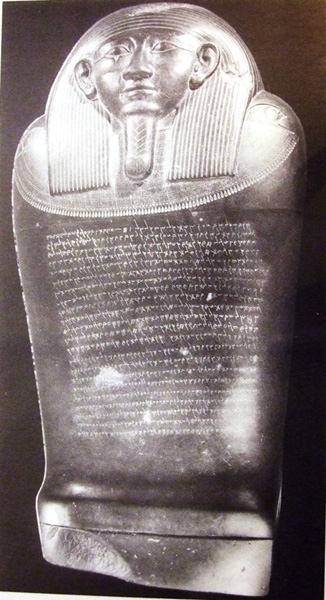






quote:^The Phoenician writing on this coin is molded into the metal of the coin, not graffiti.
Originally posted by the lioness,:
http://www.polatkaya.net/PHOENICIAN%20CITY%20OF%20GADES%20Part%203.htm

Figure 7 From A. Di Natale: “Drachm, Phoenician Punic coin in silver from Gadir, III b.C. (3.3 g);
obverse: Head of Melkart-Herakles left, wearing lion's skin headdress; club on left shoulder;
reverse: tuna-fish left Phoenician script MP'L (PK: MP’M or MF’M) above and 'GDR below.”
_____________________
above and below the fish is Phoenician writing
need I say more?


quote:I told you before, you have been wasting your time.
Originally posted by the questioner:
quote:that is a Greek coin with Phoenician writing on it
Originally posted by the lioness,:
[qb] http://www.polatkaya.net/PHOENICIAN%20CITY%20OF%20GADES%20Part%203.htm

Figure 7 From A. Di Natale: “Drachm, Phoenician Punic coin in silver from Gadir, III b.C. (3.3 g);
obverse: Head of Melkart-Herakles left, wearing lion's skin headdress; club on left shoulder;
reverse: tuna-fish left Phoenician script MP'L (PK: MP’M or MF’M) above and 'GDR below.”
_____________________
above and below the fish is Phoenician writing
need I say more?
like i said earlier the Phoenicians put their graffiti on other cultures art work
they also put their graffiti on Persian and Egyptian coffins
the image on the coin is Hercules (draped in lion skin) not melqart
quote:case closed i proved my point
Originally posted by the lioness,:
quote:^The Phoenician writing on this coin is molded into the metal of the coin, not graffiti.
Originally posted by the lioness,:
http://www.polatkaya.net/PHOENICIAN%20CITY%20OF%20GADES%20Part%203.htm

Figure 7 From A. Di Natale: “Drachm, Phoenician Punic coin in silver from Gadir, III b.C. (3.3 g);
obverse: Head of Melkart-Herakles left, wearing lion's skin headdress; club on left shoulder;
reverse: tuna-fish left Phoenician script MP'L (PK: MP’M or MF’M) above and 'GDR below.”
_____________________
above and below the fish is Phoenician writing
need I say more?

^The Phoenician writing on this coin is molded into the metal of the coin not graffiti.

^The Phoenician writing on this coin is molded into the metal of the coin not graffiti.
quote:obviously these are Greek deities because Phoenicians did not have coins
Originally posted by Ish Gebor:
quote:I told you before, you have been wasting your time.
Originally posted by the questioner:
quote:that is a Greek coin with Phoenician writing on it
Originally posted by the lioness,:
[qb] http://www.polatkaya.net/PHOENICIAN%20CITY%20OF%20GADES%20Part%203.htm

Figure 7 From A. Di Natale: “Drachm, Phoenician Punic coin in silver from Gadir, III b.C. (3.3 g);
obverse: Head of Melkart-Herakles left, wearing lion's skin headdress; club on left shoulder;
reverse: tuna-fish left Phoenician script MP'L (PK: MP’M or MF’M) above and 'GDR below.”
_____________________
above and below the fish is Phoenician writing
need I say more?
like i said earlier the Phoenicians put their graffiti on other cultures art work
they also put their graffiti on Persian and Egyptian coffins
the image on the coin is Hercules (draped in lion skin) not melqart
I also read awhile ago, that of the art on coins represented Greek deities. I forgot which museum it was.



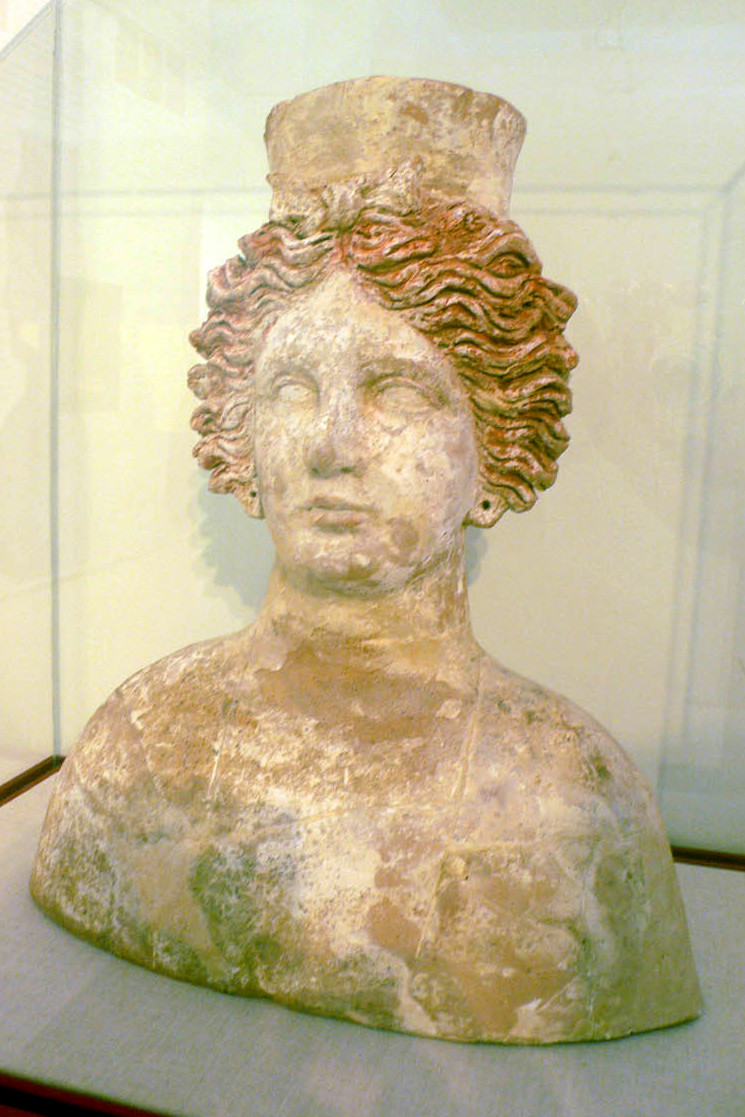


quote:Sarcophagus of Harkhebit
Originally posted by the lioness,:

graffiti
PLURAL NOUN
treated as singular or plural Writing or drawings scribbled, scratched, or sprayed illicitly on a wall or other surface in a public place
___________________________________________________
The Phoenicans had coins and a mint in Tyre, obviously you don't know what "graffiti" means
Did these coins have a greek deity on them or was the image a dual purpose syncretic image functioning both as Melkart and Hercules?
It doesn't even matter. Suppose the face on it is entirely Hercules
that doesn't change the fact that there is no graffiti on the coin
The reason why this coin has Phoenician writing on it is because THE PHOENICIANS HAD COINS AND THIS IS ONE OF THEM
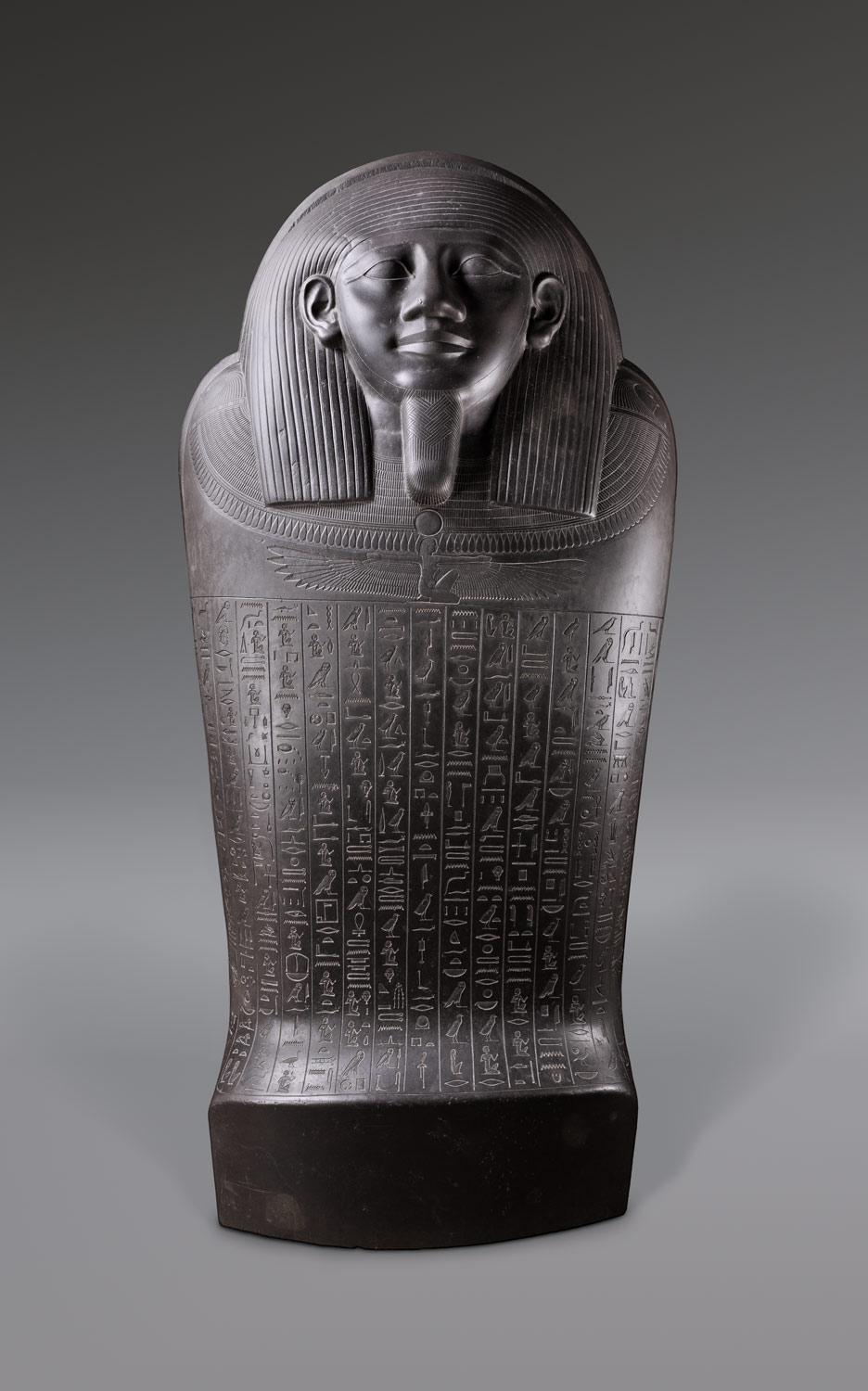

quote:^^^ the above is a bust of Persephone not tanit
Originally posted by the lioness,:
Coins of Sidon, now in Lebanon
Sidon, Phoenicia, AR Double Shekel. Uncertain King, 460-450 BC. Phoenician war-galley left at the base of a city wall surmounted by five battlemented towers; two lions salient addorsed below / Persian King, wearing tiara and candys, raising right hand, standing left in horse-drawn chariot driven by charioteer. BMC 4-8; Rouvier 1082-1084; cf Sear 5934.

Phoenicia, Sidon, Uncertain king AR Half Shekel. 405-395 BC. Galley left before four city towers, two lions addorsed below; Phoenician letter Beth above / King of Persia standing right, slaying lion standing on its hind legs before him. Rouvier 1092; Betlyon 14.

Bust of the Punic goddess Tanit found in the Carthaginian necropolis of Puig des Molins, dated 4th century BC,
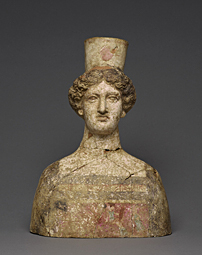

quote:^^^ the above are Persian coins brought to Phoenicia during the Persian conquest
Originally posted by the lioness,:
Coins of Sidon, now in Lebanon
Sidon, Phoenicia, AR Double Shekel. Uncertain King, 460-450 BC. Phoenician war-galley left at the base of a city wall surmounted by five battlemented towers; two lions salient addorsed below / Persian King, wearing tiara and candys, raising right hand, standing left in horse-drawn chariot driven by charioteer. BMC 4-8; Rouvier 1082-1084; cf Sear 5934.

Phoenicia, Sidon, Uncertain king AR Half Shekel. 405-395 BC. Galley left before four city towers, two lions addorsed below; Phoenician letter Beth above / King of Persia standing right, slaying lion standing on its hind legs before him. Rouvier 1092; Betlyon 14.

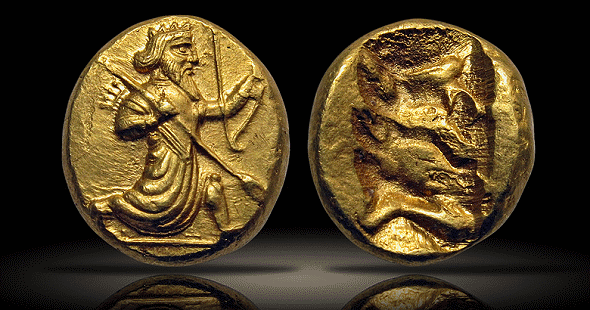



 notice the writing is uneven
notice the writing is uneven
quote:You simply made that up
Originally posted by the questioner:

it has "Phoenician" graffiti molded on it
quote:i did not make it up because obviously your looking at it
Originally posted by the lioness,:
quote:You simply made that up
Originally posted by the questioner:

it has "Phoenician" graffiti molded on it
and such a technique doesn't even exist
____________________________________________
now in the next 10 or 20 minutes you will go searching for it (in vain)
- this after you already made the statement
![[Roll Eyes]](rolleyes.gif)
quote:with that logic than i can say the same thing
Originally posted by the lioness,:

That means that the coin was originally molded with Phoenician writing in it, this is obvious, Phoenician writing, Phoenician function, Phoenician coin




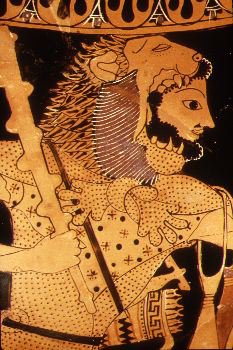
quote:1) how do you know this?
Originally posted by the questioner:
the graffiti was incorporated into the Greek mold before it was press to the metal (coin)
quote:graffiti because it is on a Greek coin depicting Greek art work
Originally posted by the lioness,:
quote:1) how do you know this?
Originally posted by the questioner:
the graffiti was incorporated into the Greek mold before it was press to the metal (coin)
2) and after you answer that if such a thing was done why are you calling it "graffiti" when historians don't use that term to describe something like that?
3) what would the purpose of having Phoenician writing on this coin be? Why Phoenician writing?

quote:
Originally posted by the questioner:
the graffiti was incorporated into the Greek mold before it was press to the metal (coin)
quote::
Originally posted by the lioness,:
what would the purpose of having Phoenician writing on this coin be? Why Phoenician writing?
quote:the coin has Phoenician writing on so that people who read Phoenician can read it.
Originally posted by the questioner:
perhaps to show case Phoenician dominance over Greek people or Greeks to have a translation for Greek dominance over Phoenician people
(historians can only guess)
quote:in conclusion
Originally posted by the lioness,:

quote:
Originally posted by the questioner:
the graffiti was incorporated into the Greek mold before it was press to the metal (coin)quote::
Originally posted by the lioness,:
what would the purpose of having Phoenician writing on this coin be? Why Phoenician writing?
quote:the coin has Phoenician writing on so that people who read Phoenician can read it.
Originally posted by the questioner:
perhaps to show case Phoenician dominance over Greek people or Greeks to have a translation for Greek dominance over Phoenician people
(historians can only guess)
There are many sources that say the Phoenicians had a mint in Tyre, Lebanon
It would be more reasonable that you acknowledge that the Phoenicians and Carthaginians had coins, coins with Phoenician writing on them and used these coins to exchange for goods
but then argue that the Gods depicted on these Phoenician/Carthaginian coins were Greek
That is more worthy of consideration than to say they didn't have coins
quote:Either you can list all references and no that there aren't any more
Originally posted by the questioner:
the only reference of Carthaginian money is leather money
(this is also a fact)
quote:show the coins with tanit
Originally posted by the lioness,:
Kerkouane or Kerkuane (Arabic: كركوان, Karkwān) is a Punic city in north-eastern Tunisia, near Cape Bon. This Phoenician city was probably abandoned during the First Punic War (c. 250 BC) and, as a result, was not rebuilt by the Romans. It had existed for almost 400 years.
Excavations of the town have revealed ruins and coins from the 4th and 3rd Centuries BC.
Carthaginian currency featured a female head identified as the goddess Tanit.[10] One issue of bronze coins in two denominations—Tanit the god of sun on the obverse and a galloping horse reverse—was coined at Kerkouane on Cape Bon during the resistance to the invasion of Regulus amid the First Punic War.[7] A great deal of highly debased coins were struck at the end of the First Punic War, however, to deal with the empire's revolting mercenaries.[11]
Between the First and Second Punic Wars, Carthage only issued bronze coins in North Africa,[11] although the Barcids issued gold and silver coins in Spain[4] bearing the head of Melqart obverse and a horse and palm tree reverse.[12] The gold coins were produced at a weight of 7.50 g, reflecting a value of 12 silver shekels each at a bullion exchange rate of 1:11⅓

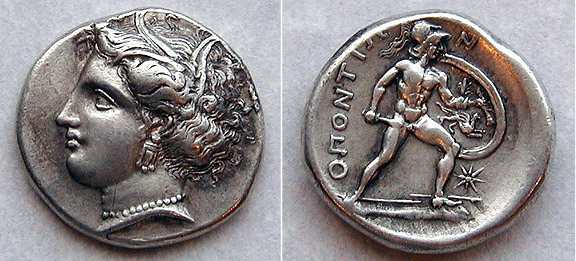
quote:there is no reference to Carthaginian coinage in ancient times
Originally posted by the lioness,:
quote:Either you can list all references and no that there aren't any more
Originally posted by the questioner:
the only reference of Carthaginian money is leather money
(this is also a fact)
- and have checked them all for reference to Carthaginian money
or you have a reference saying the only reference of Carthaginian money is leather money.
Which is it and what is your source
quote:.
Originally posted by the questioner:

supposed Carthaginian coin with a supposed portrait of tanit

coin of persephone
(note the similarities)
quote:^^^^i don't see Phoenician on any of these coins
Originally posted by the lioness,:

Punic coin struck 400-350 BC and circulated hundreds of years before the 1st Punic War (264-241 BC)

Punic coin struck circa 221-210 BC, was circulating just prior to and during the Hannibalic War of 218-201 BC.
Again you can argue that the Phoenicians used Greek artisans to make their coins and possibly Greek gods on their coins
but you cant argue they didnt have coins
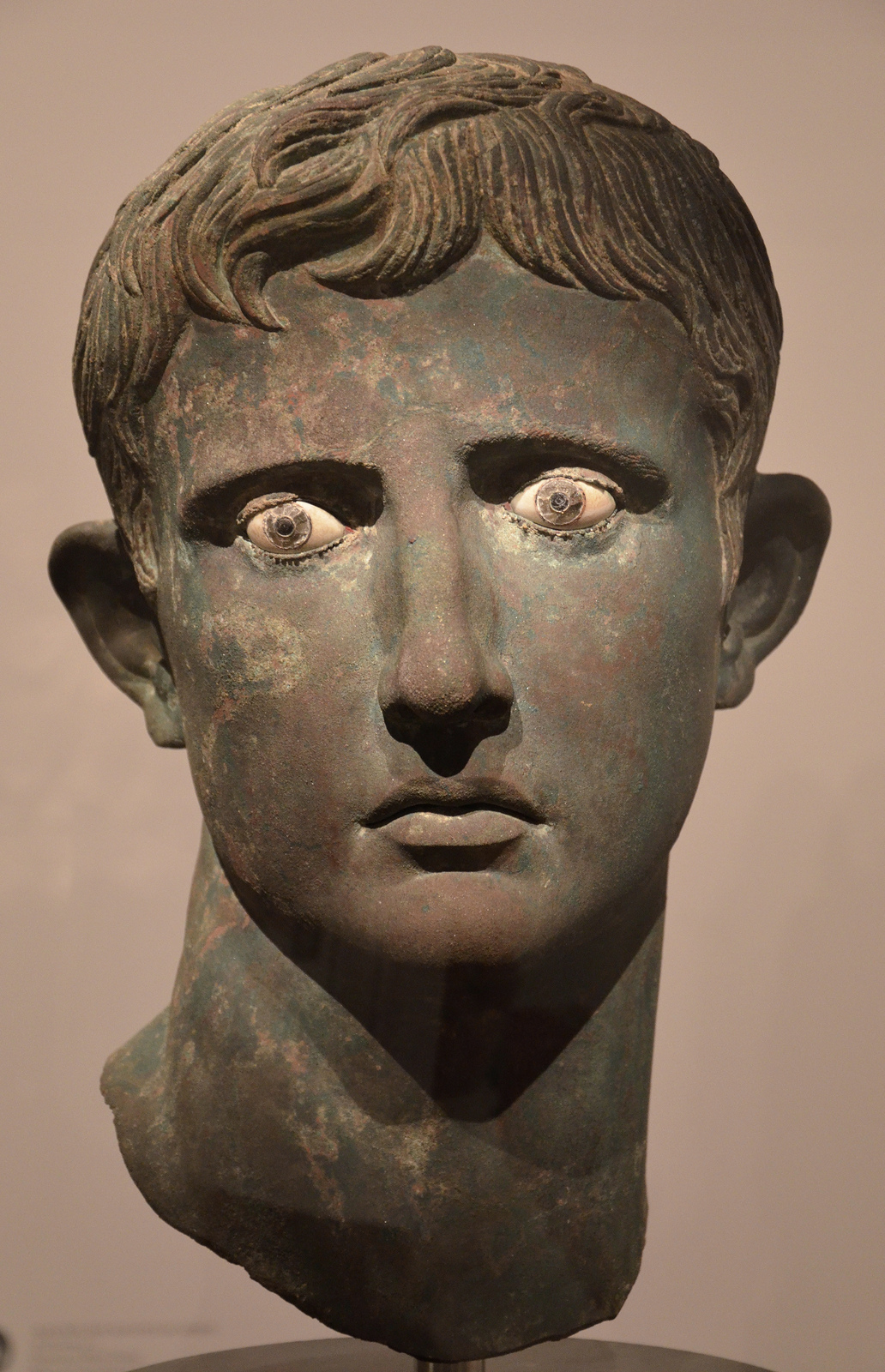
quote:prove it with evidence not regurgitation
Originally posted by Mike111:
quote:.
Originally posted by the questioner:

supposed Carthaginian coin with a supposed portrait of tanit

coin of persephone
(note the similarities)
If your point is that Albinos make FAKE coins for all Black civilizations - that is true.
But your statement: "there is no reference to Carthaginian coinage in ancient times
this is mainly a modern historian theory
when Carthage was colonized by Romans is when they introduced coin use as a currency".
Makes no sense as Carthaginians were from Tyre, and Tyre had coinage from supposedly several hundred B.C.